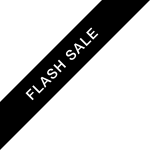Wholesale Blog
Buying vs. Consignment Which Should You Use to Stock Your Business?
The demand for resale products is skyrocketing, and some of your customers' most-wanted bags and accessories are becoming very hard to find. So, how do you make sure you receive the Louis Vuitton and Chanel bags they really want? You could buy them from a wholesale supplier, rely on customer consignments, or try a combo of both.

LePrix Team

Business models changed swiftly during the pandemic, and today our new normal isn’t quite business as usual – and that’s a good thing. We’ve had to adapt and make strategic changes not only to survive, but thrive, and while we’re still trying to make our way through hurdles such as inflation, supply chain issues and the economy, the resale industry is on fire.
According to ThredUp’s 2023 resale report, the global secondhand market is expected to nearly double by 2027, reaching $350 billion. In fact, the market is expected to grow three times faster on average than the global apparel market overall.
As consumers continue to embrace resale, demand for some of the most-wanted pieces has skyrocketed too, and that means hard to find pieces will become even more scarce.
So, how do you make sure you receive the pieces that your customers really, really want? You’ve got options… you could buy products from a wholesale supplier, rely on customer consignment, or you could try a combo of both.
Let’s explore the differences and find out which option may work best for your business.

What is the buying model?
When a retail store buys merchandise, it purchases the products outright from suppliers, wholesalers or manufacturers and then the store becomes the owner of the goods and is responsible for selling them for profit. This is the most traditional method of stocking inventory in a retail store.
Advantages of Buying
- Control over pricing
- Higher profit margin when the products sell
- Ability to choose and curate your own product assortment including ensuring your inventory is a mix of low, medium and high-end items.
- A more diverse selection of items
- It’s an easy way to grow and elevate your business
Disadvantages of buying
- You could be stuck with unsold inventory but if you source from LePrix, we have a risk-free exchange program so you can return items within 60 days if you can’t sell them
- There may be more upfront costs since you need to pay for inventory before you sell it. However, you make it on back with a higher margin and profit when it sells
What is the consignment model?
In the consignment model, your customers consign items with your business. Each consignment model is slightly different in terms of pricing and markdown schedule. Since inventory is mostly dependent on your store’s foot traffic and items you receive; you may not get the trendy or in-demand pieces your customer want and you really need.
Advantage of consignment
- You’ll see lower upfront costs since you won’t pay for inventory until it sells
- A reduced risk of overstocking as unsold items can be returned to the customer
Disadvantage of consignment
- You’ll see lower profit margins since a percentage of the sale goes back to the consignor.
- You’ll have less control over pricing, promotion and product assortment
- Consignors may reclaim their products if you’re not happy with sales
- Consignment can make inventory management and storage more complex
The Hybrid Model
Both the buyout and consignment models are great for resale businesses, but you still are relying on what your customers walk into your store with. If you’re running low on key styles, check out our pre-owned wholesale Louis Vuitton crossbody bags, Gucci totes, and Chanel classic flaps, check out our latest new arrivals on LePrix Wholesale.
